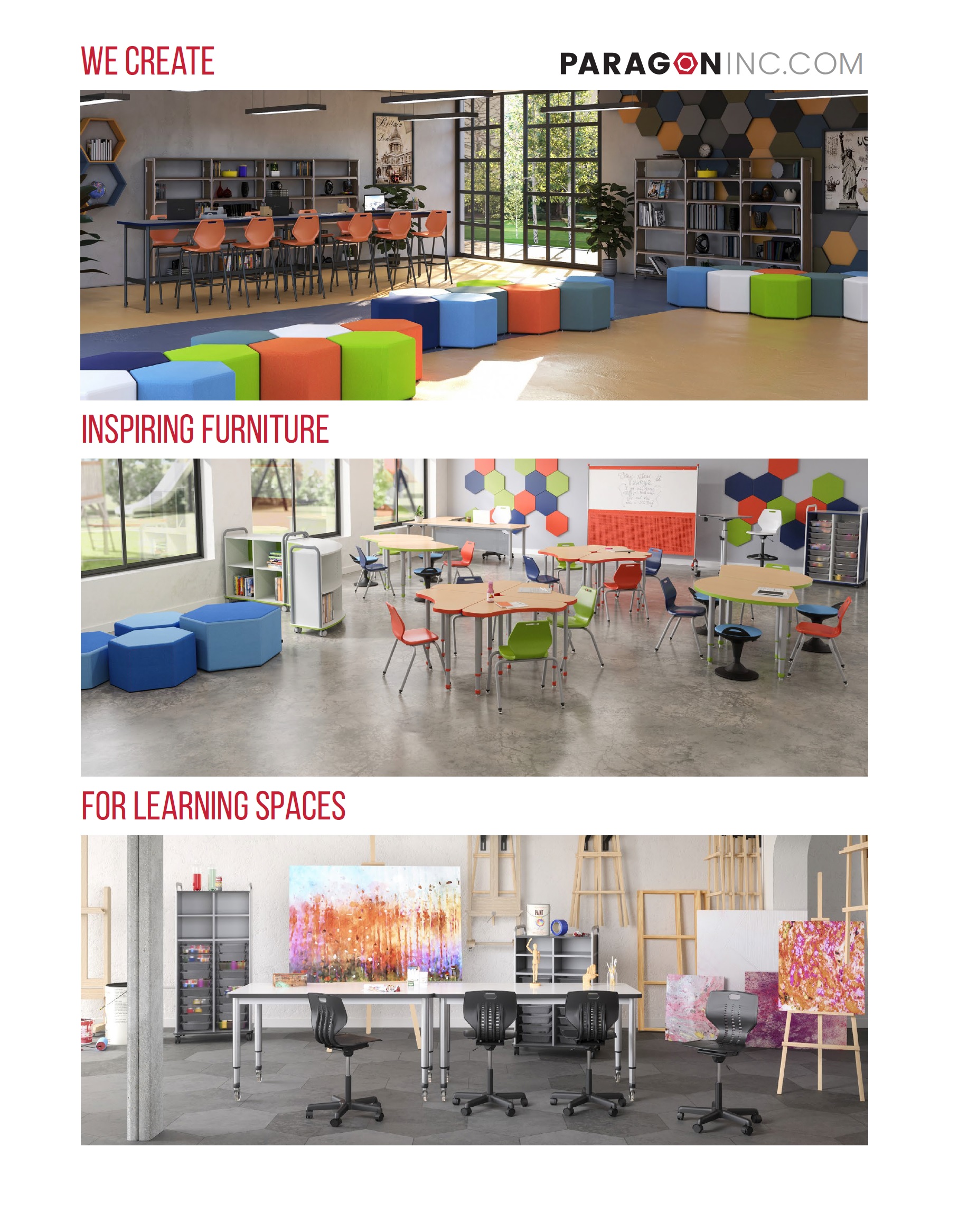THE FUTURE OF CLASSROOM DESIGN
WHERE EDUCATION MEETS INNOVATION
As we look ahead to the next 5 to 10 years, the classroom is on the cusp of a design revolution – one that places flexibility, functionality, and human-centered design at the core of learning environments. Driven by pedagogical shifts, evolving technology, and a deeper understanding of how physical space affects student engagement and achievement, the future classroom will no longer be defined by standards put in place in the last century. Instead, it will be a dynamic ecosystem designed to foster collaboration, creativity, and well-being for both students and educators.
The classroom of the next decade will be an adaptable, tech-friendly, student-centered environment – designed not just for instruction, but for inspiration. By focusing on flexibility, mobility, technology integration, collaboration, and wellness, we can create spaces that elevate both teaching and learning. And at the heart of it all will be furniture designed with purpose – not as static objects, but as tools for empowerment, growth, and discovery.
Flexible Furniture for a Flexible Mindset
In the classrooms of the future, one size will not fit all. Schools will increasingly adopt mobile, reconfigurable furniture that supports a variety of learning modes – independent study, small group collaboration, large group instruction, and hands-on activities. Not only will the furniture be designed with this intention, the physical space will be deigned to accommodate this type of learning. Lightweight materials, configurable shapes, and casters will allow students and teachers to quickly adapt the space to suit the task at hand, and the space will have less physical clutter to allow easy movement.
This level of furniture flexibility empowers students to take ownership of their learning environment, while also enabling teachers to tailor the classroom layout to their lesson plans in real time. The result is a more engaged, active learning experience. Learning is not static, and classroom furniture shouldn’t be either. The future classroom will prioritize mobile workspace, seating, and storage solutions to promote movement, inclusivity, and ease of use. Chairs that swivel and roll encourage students to physically orient themselves toward different peers or areas of focus, enhancing collaboration and attention. Mobile storage carts and writable surfaces can transform open floorplans into breakout spaces, sensory zones, or presentation areas with minimal effort.
Technology and Power Integration
In an increasingly digital world, the classroom must be ready to support a range of devices—from laptops and tablets to interactive whiteboards and virtual reality tools. The classroom of the near future will feature tech-ready furniture with built-in power and charging capabilities. Tables with integrated USB and power outlets, wireless charging pads, and cable management systems will become standard.
Beyond hardware, smart furniture equipped with sensors may begin to track environmental conditions like light and sound levels, helping to create optimal learning environments. These innovations not only support tech use but reduce distractions and downtime, letting teachers focus on instruction instead of logistics. A strong focus on Sensory Ergonomics will play a big role in how furniture is designed and how the space is configured.
Designed for Collaboration and Community
Collaboration is at the heart of 21st-century learning, and the design of future classrooms will reflect that. Expect to see more communal furniture, such as round tables, shared workstations, and tiered seating for group discussions. Whiteboard surfaces on tables and walls will encourage ideation and visibility of student thinking while creating spaces where everyone can participate at the same level.
Flexible lounge furniture – couches, soft seating, pivot stools, etc. will create informal gathering spots, especially in upper grades, where students are learning to self-direct their work. Educators will also benefit from flex zones that allow them to move fluidly between whole-class instruction and individual support.
Comfort and Wellness as Priorities
The future classroom isn’t just functional—it’s also designed with wellness in mind. Sensory Ergonomics based design elements, such as soft seating, acoustic dampening elements, natural lighting, and biophilic design features will help reduce stress and improve focus. Expect to see more adjustable-height desks that allow students to stand or sit as needed, and soft textures that create a sense of calm and safety.
Classroom design will increasingly support social-emotional learning, giving students a sense of control, comfort, and belonging.
A Space That Grows with the Learner
Perhaps most importantly, future classroom design will not be static. Spaces will be designed to evolve over time, adapting to new curriculum, new teaching strategies, and new student needs. Multi-use furniture will replace task-specific pieces, and classrooms will become hubs within broader learning communities – connected to outdoor spaces, makerspaces, and virtual platforms.
The future isn’t far off. In fact, it’s already being built – one chair, one table, one thoughtful space at a time! To see some of the amazing, future-ready furniture that Paragon already has, check out Paragoninc.com
CHECK OUT OUR BRIEF BUT ROBUST GUIDE THAT SHOWS YOU EVERYTHING YOU NEED TO KNOW ABOUT PARAGON FURNITURE AND THE AMAZING FURNITURE WE CREATE
CLASSROOM DESIGN FILES
Access all of the design resources you need to create a beautiful classroom!
